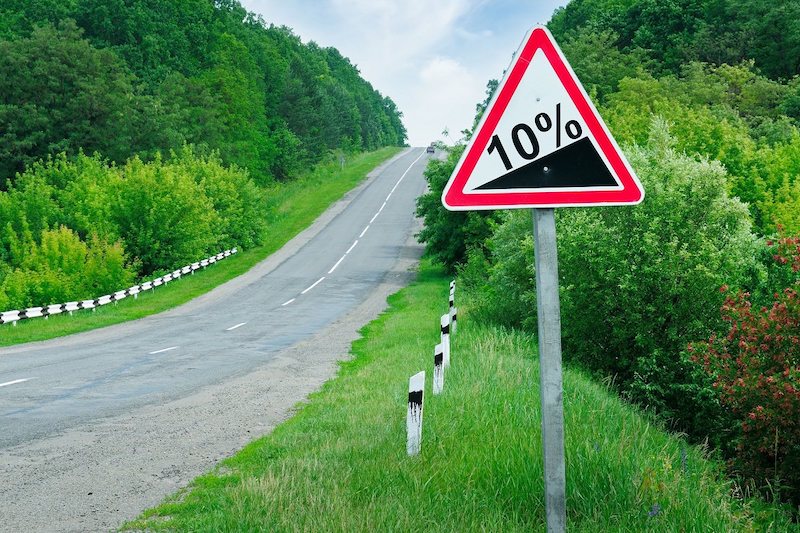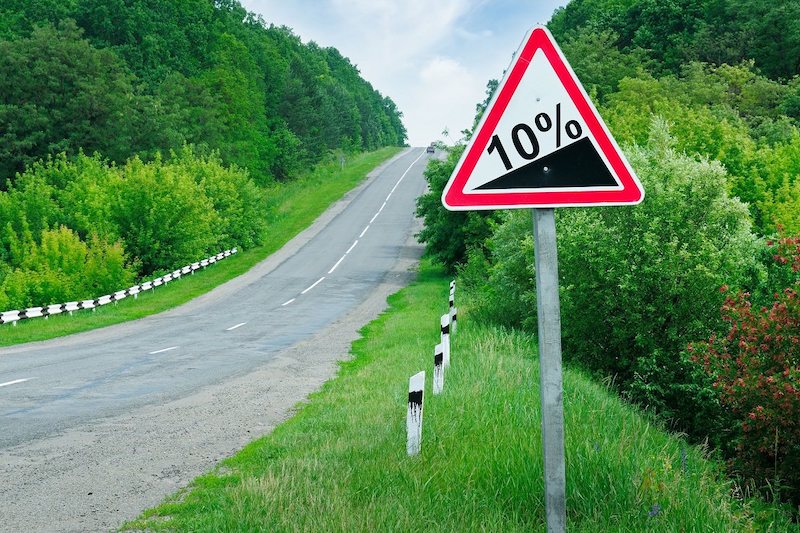
Why do steep descent and ascent signs show percentages and what they mean
Content
Each driver at least once in his driving experience drove through hilly terrain. Steep descents and ascents are preceded by signs with a black triangle indicating a percentage. What do these percentages mean and why are they indicated?

What do percentages mean
On the signs of steep descents and ascents, the percentage indicates the tangent of the angle of inclination. If you look at the road from the side and imagine it as a right triangle - the road itself is the hypotenuse, the horizon line is the adjacent leg, and the height of the descent is the opposite leg, then the tangent is the ratio of the height of the ascent or descent to the horizon line. In other words, the percentages show the change in the vertical level of the road in meters over a XNUMX meter stretch.
Why percentages are used
In the process of road traffic, the angle of inclination in degrees will not tell the driver anything. And the number of percent indicates how much the car will go down or up every 100 meters, that is, if the sign is 12%, it means going up or down 12 meters every 100 meters.
The second point of convenience in indicating the angle of inclination as a percentage is that its tangent is equal to the coefficient of adhesion of the car wheel to the road surface. Thanks to this, it is possible to calculate the speed at which you can go uphill or downhill without flying off the track.
How to convert percentages to degrees
You can convert the tilt angle from percent to degrees on the calculator on your phone by switching it to "engineering mode". The number of degrees will be the value of the arc tangent of the percentage depicted on the road sign.
Why does the driver need to know the exact value of the steepness of the ascent or descent
Depending on the weather conditions, the grip of the wheels with the road surface will be different. Surely every driver drove in ice, and in rain, and in snow, feeling this difference. Pointers with a descent or ascent tire at the point where the slope approaches 10%. If in rainy weather on the rise to slow down, then at least the car will not rise.
In addition, in the old coastal cities there are streets in which the angle of inclination exceeds all kinds of standards. That is, when driving on a slope of wet asphalt with an angular coefficient of 20%, the braking efficiency drops by half.
Therefore, it is important to pay attention to the signs of ups and downs, especially in bad weather. Knowing the coefficient of adhesion of the wheels with the road, depending on weather conditions and the angle of inclination, can even save lives in some situations.
